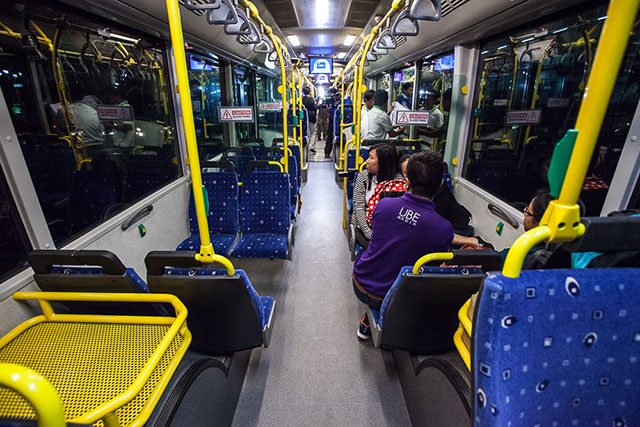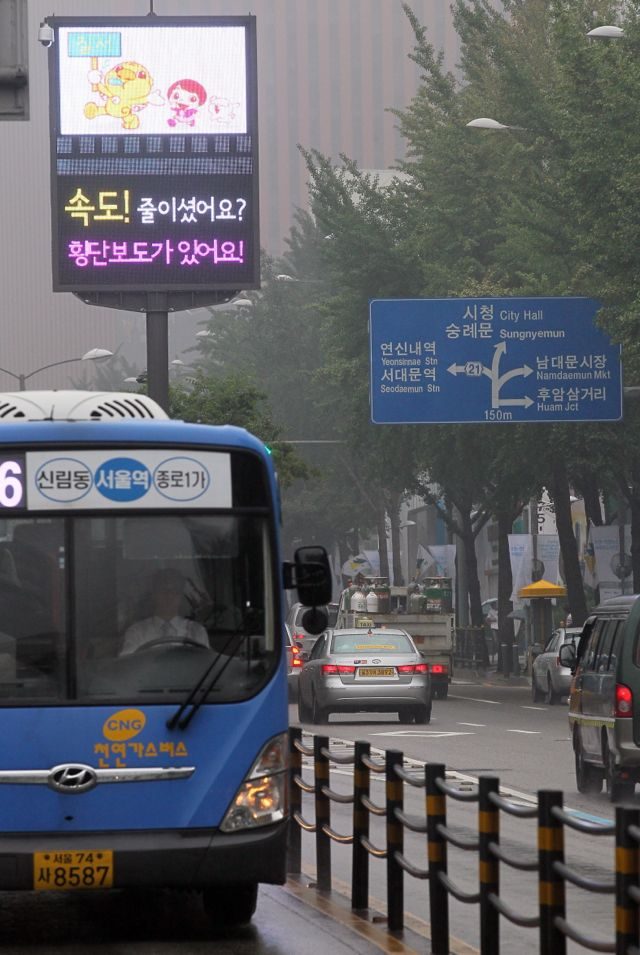SUMMARY
This is AI generated summarization, which may have errors. For context, always refer to the full article.

MANILA, Philippines – A city choking from traffic congestion day in, day out. An economy on the rise, making cars affordable and putting more of them on the streets. Bus drivers infamous for speeding and overloading the vehicle, with little to no concern for passengers’ welfare.
This could be a description of Metro Manila today. But this was how Seoul was more than a decade ago, before the city government started a wide range of reforms in its public transport system that made travel within the South Korean capital easier, faster, and more convenient.
It was a move triggered by the need to fix the traffic problem at a lower cost. Instead of constructing expensive subway lines, the city government instead looked toward an existing mode of transport that only needed reorganizing to make it more efficient and profitable: the bus system.
Metro Manila is trying a similar tack in its latest venture to decongest the roads and speed up the everyday commute. Last month, transportation agencies introduced the Express Connect, a new service that aims to attract car owners to take the bus by promising comfort, convenience, and faster travel time.
The buses have designated terminals and will make only one stop or two between origin and destination. If this proves successful, the Department of Transportation and Communications (DOTC) may add more routes and encourage more bus firms to join the program.
The DOTC is consulting with transport planning expert Gyeng Chul Kim, who was part of the team that led studies on the new Seoul system. What can the Philippines adapt from South Korea’s successful reform program?
Reorganized bus services
Before 2004, bus companies in Seoul had exclusive licenses to operate particular routes. Many of these routes, however, overlapped or were long and circuitous.
In July 2004, the Seoul city government began the “semi-public operation system.” The bus firms remained private, but the government now had control over route and fare decisions.
More than 400 bus routes were integrated and redesigned. The routes were divided into feeder lines for shorter trips, and trunk lines for medium- to long-distance trips. Buses were color-coded for easy identification. To speed up travel, bus rapid transit (BRT) corridors were also developed.
By reorganizing the bus routes, the long, circuitous paths were abolished, previously neglected areas got access to bus services, and commuters were able to transfer easily from bus to bus, and from bus to the subway.
To encourage more bus riders, the city government had to convince passengers that they could expect better services. Incentives were given for bus firms, and drivers got higher salaries to lessen the pressure for competition.
Satisfied passengers led to more bus riders, which in turn improved revenues. This also meant safer bus operations and fewer road accidents.
Smart card system
The 2004 reform program also introduced the distance-based charging system, which replaced the previous system of charging a flat rate regardless of the distance travelled.
Officials also promoted the use of a new transportation card, which tracks the distance travelled by a passenger. Commuters can buy and reload the card at convenience stores, and they can use it to pay for bus or subway trips.
As an additional incentive, the smart card keeps track of transfers from bus to bus and to subways – and allows these transfers for free.

Integrated information system
One crucial element of the reform plan was the creation of a platform that collected information provided by related government agencies.
The Seoul Transport Operation and Information Service, the Bus Management System, and the Bus Information System were then introduced.
A central control center uses GPS to track the location and speed of buses in real time. This allows the control center to communicate with drivers, adjust the number of buses plying a route, and make the information available to passengers checking timetables online.
Collaborative planning
A reform program of that scale would not have been possible without the cooperation of various agencies and government units.
It was not the work of the Seoul Metropolitan Government alone. For instance, on the proposal to raise fares and integrate the fare system, it had to consult with the Korea Railroad Corporation and Incheon Transit Corporation.
The reforms were initially met with confusion and dissatisfaction. But by October 2004, nearly 90% of Seoul residents said they were satisfied. Average bus speeds increased, the number of accidents went down, and more than 700,000 passengers were added to the bus system.
Seoul’s cost-effective reform plan and its efficient use of infrastructure and technology won international recognition, with experts hailing it as proof that improving public transportation does not mean having to rely on expensive solutions. – Rappler.com
Add a comment
How does this make you feel?
There are no comments yet. Add your comment to start the conversation.